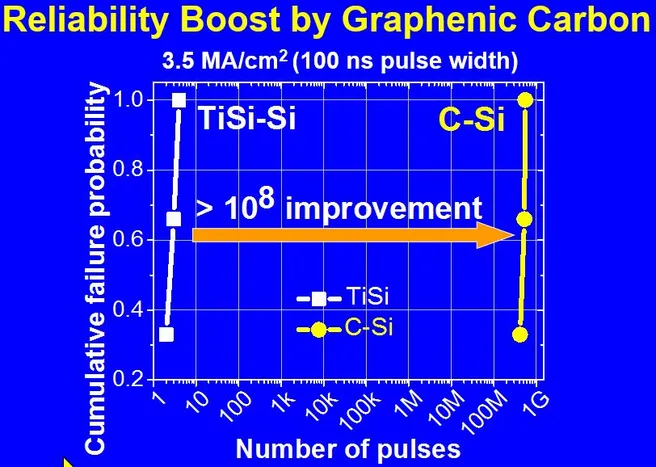The IEEE International Electron Devices Meeting (IEDM) with ~2000 attendees from academia and semiconductor industries is the world’s preeminent forum for reporting technological breakthroughs in the areas of semiconductor and electronic device technology, design, manufacturing, physics, and modeling. IEDM is the flagship conference for nanometer-scale CMOS transistor technology, advanced memory, displays, sensors, MEMS devices, novel quantum and nano-scale devices and phenomenology, optoelectronics, devices for power and energy harvesting, high-speed devices, as well as process technology and device modeling and simulation.
Max Stelzer is going to show the IGSSE sponsored presentation of the paper 21.7 "Graphenic Carbon-Silicon Contacts for Reliability Improvement of Metal-Silicon Junctions" on Tuesday, December 6, 4:50 p.m. in the Imperial Ballroom A.
Contact resistance and thermal degradation of metal-silicon contacts are challenges in nanoscale CMOS as well as in power device applications. Titanium silicide (TiSi) contacts are commonly used metal-silicon contacts, but are known to diffuse into the active region under high current stress.
In this paper we show that a graphenic carbon (C) contact to n-type silicon (C-Si) has the same low Schottky barrier height of 0.45 eV as TiSi, but a much improved reliability against high current stress. The C-Si contact is over 100 million times more stable against high current stress pulses than the conventionally used TiSi junction. The C-Si contact properties even show promise to establish an ultra-low, high temperature stable contact resistance.
The finding has important consequences for the enhancement of reliability in power devices as well as in Schottky-diodes and electrical contacts to silicon in general.
A preprint of the paper is available here. The conference paper is here.
UPDATE: It seems that Intel's 3D XPoint memory is using carbon interconnect material as its
OTS and PCM contacts. The TEM-images indicate a low density (~2 g/cm3) interconnect material like carbon.
UPDATE:
A new paper has been published in the open-access IEEE Journal of the Electron Devices Society. "Graphenic Carbon: A Novel Material to Improve the Reliability of Metal-Silicon Contacts"
Abstract: Contact resistance and thermal degradation of metal-silicon contacts are major challenges in nanoscale CMOS as well as in power device applications. Titanium silicide (TiSi) is commonly used to establish low-barrier height contacts to silicon, in state-of-the-art FinFETs or Schottky diodes. But the metal is known to diffuse into the active region under high current stress, as during an electro-static discharge (ESD) event. This work shows with a Schottky diode as test vehicle that a carbon-silicon (C-Si) contact has the same low Schottky barrier height as a TiSi-Si junction but is over 100 million times more stable against high current pulses. A Schottky barrier height between 0.36 eV and 0.45 eV can be obtained by a variation of the deposition process. This makes C-Si a promising candidate for future high current density and temperature stable contacts and even for applications that require low contact resistances.
The work is supported by Deutsche Forschungsgemeinschaft (DFG) through the TUM International Graduate School of Science and Engineering (IGSSE) and the Open Access Publishing funding program of the Technical University of Munich (TUM).
The paper can be downloaded for free here.
